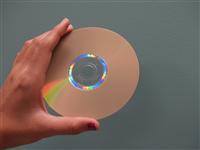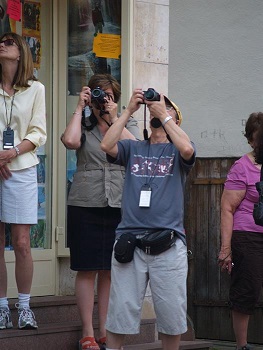
Learn Digital Photography
A course for anyone, aspiring to better understand the technology that underpins modern photography, and practical techniques that can be applied to create better images.
Comment from one of our students:
Excellent service from (the tutor) who dealt with any query quickly, and returned written work always with a note and kind regards.
C. Hatchard, UK - Digital Photography course.
Develop your ability to produce photographs using digital technology (digital or conventional photography combined with computer software and hardware for processing the photographs). Digital photography is a relatively new and radically different technique to film photography which records images in the form of digital (ie. 2 digit or binary) codes. In simple terms digital codes are similar to Morse code. One number or digit is indicated by a pulse of electricity, a second digit is indicated by no electrical pulse. By combining these pulses and lack of pulses into codes, we can, for example, create representations for letters of the alphabet; allowing us to write language or text on a computer. When we combine these electrical "pulses" and "no pulses" (or ‘ones’ and ‘zeros’) in more complex combinations, we can create more complex representations. These can include the colour, and degree of darkness or brightness in a single spot on a picture.
COURSE STRUCTURE
This course is divided into eleven lessons as follows:
1. Introduction To Digital Technology
How images are captured and stored, categories of equipment & software, scope of applications
2. Equipment -getting started; deciding what you need
CCD's, Image Sizes, Raster Images,, Video Cards, Colour depth, Computer terminology etc.
3. Digital Technology
Colour, resolution, sensors (how technology enables digital images to be captured).
4. Digital Cameras
Image formation, lenses, camera stability, one shot cameras, 3 shot cameras, terminology (eg.DPI, DVD, Bit, EDO RAM, Plug In etc)
5. Taking Photographs
Principles of Photo Composition, Creating effects, Default Setting, Compression of Data, Dithering, Halftones etc
6. Scanners
Techniques which can be used for digitally capturing images from film photographs, or graphics
7. Uploading Images
How digital images can be transferred effectively from a camera (or scanner) onto another device (eg. a computer, video monitor, television set, etc).
8. The Digital Darkroom
Techniques that can be used to process digital photographs within a computer to achieve improved or changed images
9. Compositing & Imaging - Production & manipulation of images
How digital photos can be manipulated and changed to produce altered images
10. Special Effects
Scope and nature of special effects that can be created with digital photographs
11. Outputs & Applications- Printers, The Internet
How and where digital photography can effectively be used.
WHAT YOU WILL DO IN THIS COURSE
Here are just a few examples of what you may do:
- Investigate software available for processing digital photographs
- Obtain literature on Adobe Photoshop and any two other types of software.
- Compare the different software options which you investigate.
- Develop a check list of what would be required if you were to purchase a digital camera for professional freelance photographic work (such as studio portraits and wedding photography)
- Find five photographs you have taken in the past which have not been as successful as you would have liked. Consider what you might have done to improve the way in which the image was taken in each of these. Consider what advantages digital photography might have offered if you had taken these using a digital imaging rather than film.
EQUIPMENT REQUIREMENTS
 You will need access to a digital camera and some type of storage or output device during the course.
You will need access to a digital camera and some type of storage or output device during the course.
This is required so that you can take some photographs on a digital camera and submit them as a print or as a digitised file. An inexpensive digital camera and a printer or 3.5 inch floppy disk would be a minimum. If you plant o purchase a digital camera, but have not yet decided what to buy, it is recommended that you delay buying a camera until you have completed Lesson 3 and commenced Lesson 4. It is also suggested that you ask your tutors advice as to which camera would best suit your needs. Access to a suitable computer is also advantageous but not essential.
Duration: 100 hours
Aims:
- Describe the scope and nature of digital photography
- Select appropriate equipment for use in digital photography
- Explain how technology enables digital images to be captured.
- Compare different digital cameras and select an appropriate camera for a particular application.
- Control the effects created in a digital photograph which you take.
- Describe techniques which can be used for digitally capturing images from film photographs, or graphics.
- Explain how digital images can be transferred effectively from a camera (or scanner) onto another device (eg. a computer, video monitor, television set, etc).
- Describe techniques that can be used to process digital photographs within a computer to achieve improved or changed images.
- Explain how digital photos can be manipulated and changed to produce altered images.
- Discuss the scope and nature of special effects that can be created with digital photographs.
- Identify how and where digital photography can effectively be used.
How the payment Options Work
You can be either pay fees in one or two parts.
- If paying in 2 parts, the first part is paid on enrolment, and the second part two months later (You are sent a bill when you enrol).
- If you pay the full fee on enrolment, we offer a discounted fee (commonly around 8% lower)
What Else Do You Need?
You will need a digital camera. An SLR is ideal (if you have the option), but any digital camera is OK.
You may be able to do this course with nothing beyond that; though as with anything, additional reference material is always helpful. As a student of this school you are eligible for 10% discount on purchases through our bookshop.
How To Learn - Enrol today in an e-learning course. Flexible Open Learning -commence studying any time, study anywhere, self paced learning, with extensive support from teaching staff.
Books -check out our bookshop www.acsbookshop.com